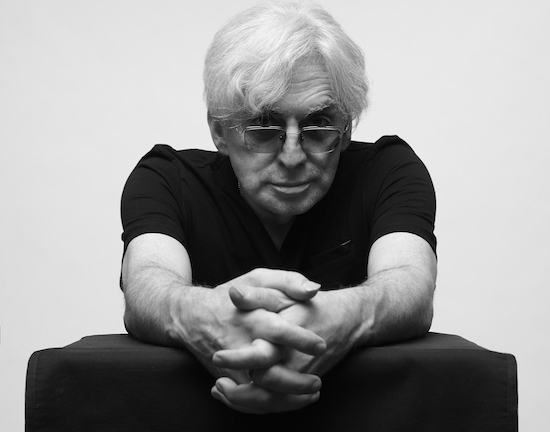Photos copyright/credit: Chris Stein.
Years before he found fame as the co-founder and guitarist of Blondie, Chris Stein developed another passion aside from music: photography. As a child growing up in Brooklyn, New York, Stein began taking photographs with his small Kodak camera. After flirting with being a hippie during his young adulthood, he took up photography again while as a student at New York City’s School of Visual Arts in the early ‘70s.
In his 2014 photo book Chris Stein/Negative: Me, Blondie, And The Advent Of Punk, Stein wrote: “When I was growing up in Brooklyn, photography was distant and mysterious, as were many other things that were simply ‘there’ but undefined… I ‘got’ the idea of photography as time travel, of moments frozen and stilled, of windows in the past.”
Now Stein unveils images that he shot almost 50 years ago in a new book collection, Point Of View: Me, New York City, And The Punk Scene (published by Rizzoli). In comparison to Negative, this book focuses more on New York street photography, although it does contain images of famous people like Deborah Harry, David Bowie, Meat Loaf, Andy Warhol, the Ramones, and William Burroughs. Stein’s snapshots range from scenes of graffiti-sprawled walls, rundown buildings, and the pornographic theaters that once populated Times Square; to everyday New Yorkers, such as commuters inside the city’s subways, and children standing on an fire escape.
As fascinating as these archival images are, this book is a sobering reminder of a bygone era amid the current climate of gentrification in New York City, where luxury residential buildings now loom large, beloved small businesses and music venues have shuttered, and working-class artists are getting priced out. Stein hints at the lack of edge in today’s New York when he writes the book’s conclusion: “I still like it in New York City… Back in the 1960s and 1970s, I had no idea that I’d come to miss the decay and the danger.”
While he continues to record and tour with Blondie (the group will be headlining a four-day festival in Havana, Cuba in March), Stein regularly posts his photos on Instagram. On November 30, he and Deborah Harry will appear at the Cooper Union, the historic New York City art and design school, to talk about the book. In this new interview with tQ, he discusses his initial encounter with photography, several select images from Point Of View, and New York City’s once-edgy past and now-gentrified present.
How did the idea of the book develop?
Chris Stein: There’s a lot of interest in the period. You keep seeing all this stuff everywhere: Vinyl, The Deuce, and all the TV things [about 1970s New York]. I see a lot of great street photographers on Instagram, so I wanted to see if I could get something going that conveyed the atmosphere of the time.
Looking back at your photographs, are you amazed at how much New York City has changed in the last five decades?
CS: I’ve been here the whole time pretty much, so it was kind of gradual. There’s a lot of aspects to it. I don’t know if I’m amazed. But as I write in the book, I didn’t really see it coming. We couldn’t foresee what was going to happen. 9/11 was the big moment of things turning over here, [and the] corporate takeover after that. I supposed if I had thought about it hard enough, I might’ve had an idea about it. I think people’s ideas of the future are never what happens.
How did you get involve in photography?
CS: I had little cameras when I was a kid. Everybody was talking about photography when we saw Blow Up, because everybody wanted to be like David Hemmings. Then I had a friend named Dennis McGuire, who was a great photographer. He was working very young. So when I was 17-18, I started seriously doing it. Dennis was a big influence on me and still is. We took him on tour in 1979. He just sent us a ton of photos from that period. We’re going to figure out what to do with them.
Did that happen before your interest in music?
CS: I was screwing around with little box cameras when I was 8-9. But I started doing guitar when I was about 12. So it was kind of simultaneous. They’re different areas of the brain that they affect. But I’ve always been drawn to visual arts as well as music.
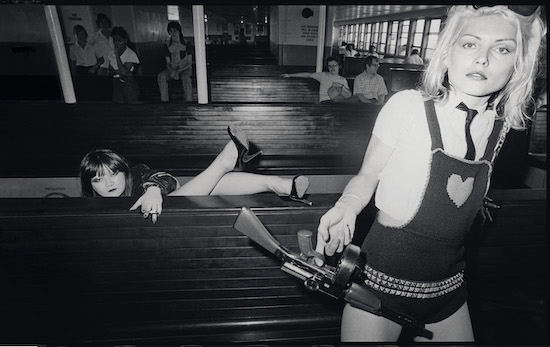
Let’s talk about some of the photographs in Point Of View, starting with the book’s cover featuring Debbie and fashion designer/downtown scenester Anya Phillips, who’s reclining on a bench.
CS: That’s from the Punk magazine fumetti. It was a comic book with photographs that started probably in the early ’60s in Spain and Italy. And then [Punk editor] John Holmstrom picked up on the idea. It was a common format: panels with comic book-type layout but with photographs instead of drawings. So that was for Punk magazine [and that shot took place] on the Staten Island Ferry. Anya was great. It was very tragic that she died really young of cancer. We were very tight with Anya and James [Chance] from the Contortions. Those guys were a couple.
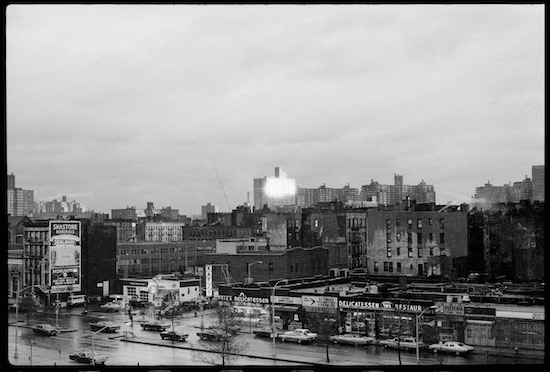
There’s a great panoramic shot overlooking Houston Street on the Lower East Side, including the famous kosher eatery Katz’s Delicatessen, which is still around today.
CS: It was taken out of my window from my apartment. When I first moved in there, there was an empty apartment building right out the window, about 10 feet away. It used to be a shooting gallery. People would crash in there and shoot up. Then one night, it burned down. My whole apartment was lit up with orange-flame light. About month later they tore [the burned-out building] down. So that’s why I had the great view.
There was a gas station across from Katz’s. There are hardly any gas stations in Manhattan at this point. It used to be a common thing. Where the gas station was is a high-rise now. Somehow Katz’s managed to keep it going. The sandwiches are so expensive now.
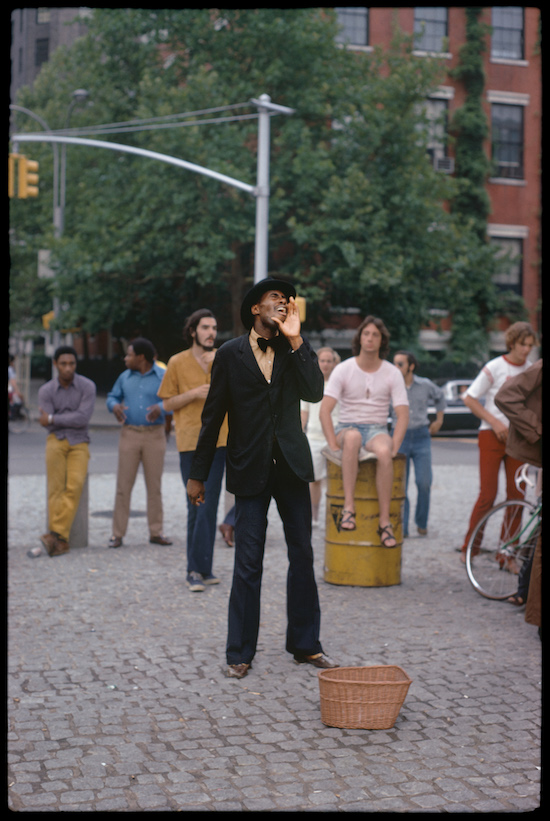
I love that photo of a street singer belting out a tune at Washington Square Park in the historic Greenwich Village neighborhood.
CS: There was something always going on. I’ve seen other pictures of him by other street photographers from the period, which is also really weird. He was probably a staple there. I don’t know if I ran into him again.
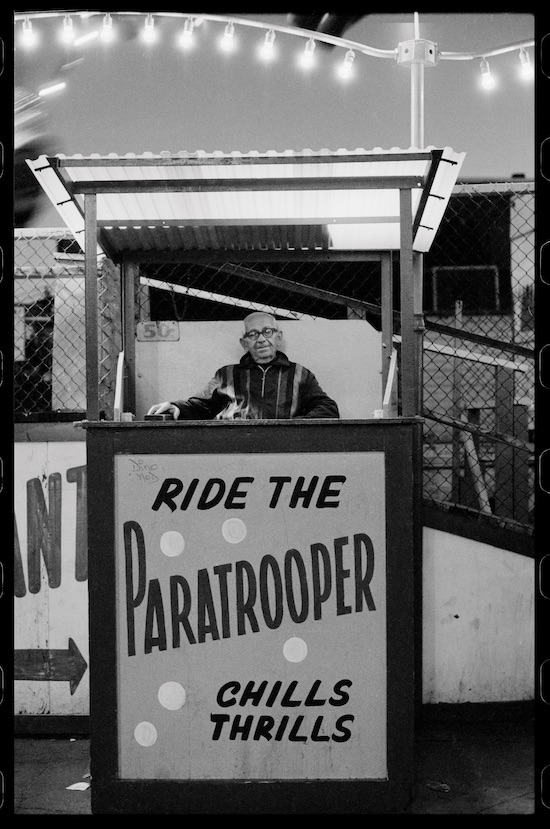
You captured some scenes of the legendary amusement destination, Coney Island in Brooklyn. You evoke both the romanticism and loneliness of that iconic area.
CS: My parents were always going there. It was what you did because it was cheap and everybody would go there on the weekends and hang out. I don’t know if it’s a 100-percent gentrified [today], but there’s still a big difference now than it was 30-40 years ago. But it was great, it had a lot of atmosphere. I think that’s why [Lawrence] Ferlinghetti coined the phrase ”Coney Island of the mind.” There’s a state of mind about the atmosphere of the place.
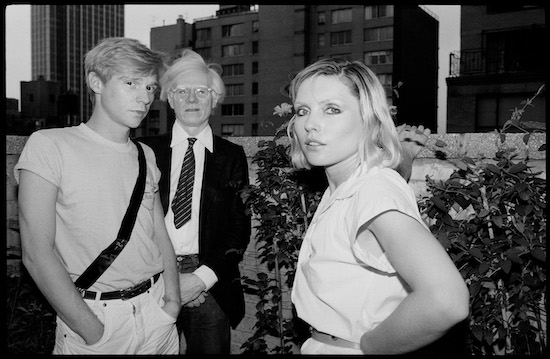
Can you talk about the circumstances behind the photograph of Debbie with Andy Warhol and the actor Dennis Christopher?
CS: That was on the terrace of our apartment on 58th Street and 7th Avenue [in Manhattan]. Warhol sought us out as we got more well known. We were recently at the opening of the Whitney Museum [for the new Warhol exhibit], which was amazing. The show is really great. I did music for his TV show [Andy Warhol’s Fifteen Minutes during the ‘80s] that was on MTV. I interviewed William Burroughs for that show. We knew [Warhol] from those last two Factory situations: the one on Union Square, and when he moved to the really giant building [on 22 East 33rd St]. We would go there a lot. Dennis is still our buddy. Have you ever seen that movie called Fade To Black? It’s a horror movie. He’s great in that role.
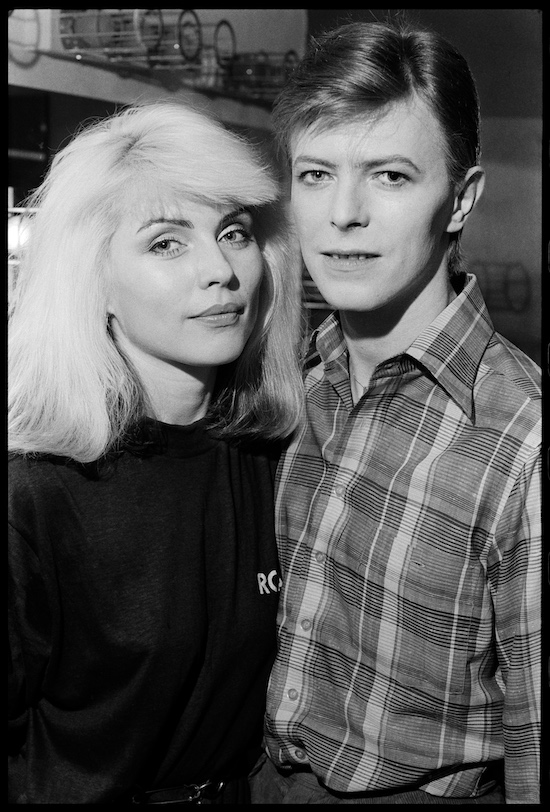
There’s also a black-and-white photograph of Debbie and David Bowie; Blondie performed a live cover version of Bowie’s ‘Heroes’ from 1980 that later appeared on the Blonde And Beyond collection.
CS: That was on the Iggy Pop tour [in 1977], when David was backing up Iggy. He was playing keyboards in his band. It was a really great moment and a big deal in Blondie’s musical history, because we were just starting out and those guys brought us on tour with them. That’s the second shot; there is a more well-known shot of the two of them leaning together. I didn’t get many shots with Bowie. He was very cautious about his image.
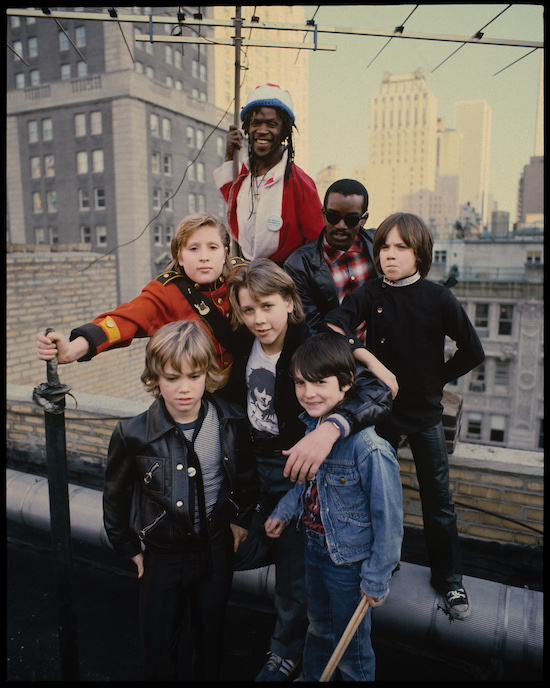
I was intrigued by this photo of the New York City rapper Fab 5 Freddy (mentioned in Blondie’s 1981 hit song “Rapture”) surrounded by this adolescent rock group called the Brattles, whom I never heard of before.
CS: The Brattles consisted of two sons of [Warhol superstar] Eric Emerson. They were a little kid punk band whom I produced a bunch of tracks for. I think I did an EP for them. They opened up for the Clash at Bonds, when the Clash played in Times Square.
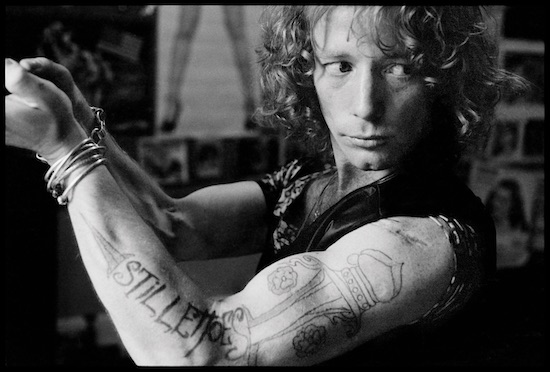
Speaking of Eric Emerson, who died in 1975, there’s this very gritty black-and-white portrait you took of him sporting a dagger tattoo on his arm.
CS: He really liked that picture a lot. He was a great guy. I wished he would’ve stuck around. He would’ve been in there with everybody else [in the music scene] .
I thought it was interesting the book concludes with your images of the scenes from the World Trade Center attack on Lower Manhattan on September 11, 2001. They contrast with the photos you took of the towers from the ’70s when they were still relatively new at that time.
CS: The Trade Center [construction] was finished by 1973. There are a couple of shots in the book where you can see it was still under construction, probably from ’72. 9/11 was a big change for the city. Everything went through a big upheaval after that. My wife [Barbara] and I were 10 blocks away when that happened.
What would be the takeaway from your photographs in Point Of View for the readers?
CS: That people will have a sense of history. It’s difficult what’s going on in the city now, especially with the rents and all the empty storefronts over in the West Village. The landlords are greedy and they get a tax break for having an empty storefront. They’d rather have a bank there than a small business. SoHo is a real drag, it’s a shopping mall. It used to be an artists’ community. Maybe people will get a sense of what’s missing now.
Point Of View: Me, New York City, And The Punk Scene, by Chris Stein is published by Rizzoli

